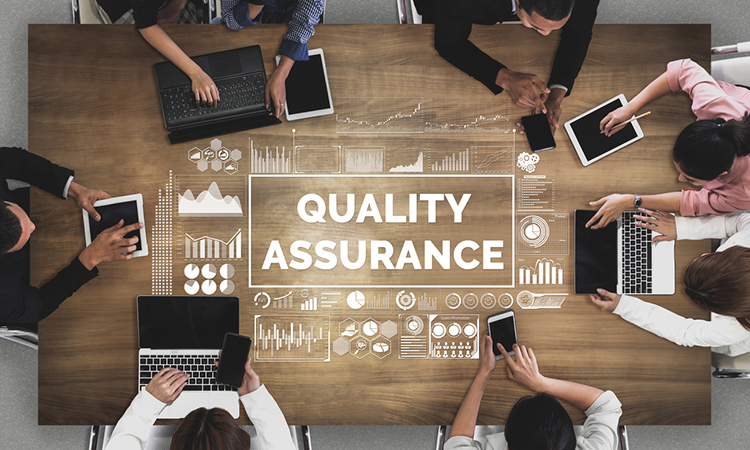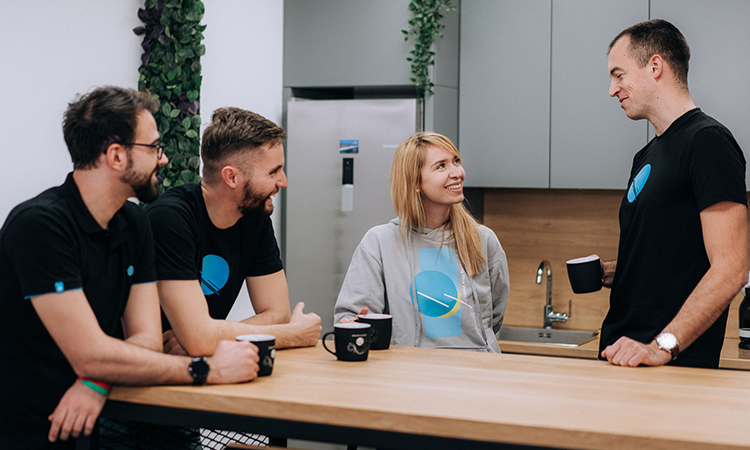Discovering the ideal digital agency for your business partnership is like uncovering a hidden gem. Picture this process as online dating – you’re on the hunt for that ideal match that resonates with your aspirations and comprehends your vision. In the current era of rapid technological advancement, your agency selection can profoundly shape the trajectory of your digital venture. It’s not just a partnership; it’s a strategic alliance that can either make your project succeed or miss out on its full potential.
Why does this choice matter so much? Well, think about it – the agency you select will be by your side for a substantial stretch of time. Whether you’re launching a groundbreaking app, revolutionizing an industry, or reshaping your digital presence, you need a partner that’s as invested in your success as you are. This isn’t just a transaction; it’s a relationship built on trust, expertise, and a shared vision.
At BrightMarbles Group Holding, we understand this dynamic perfectly.
We’re not just about delivering projects; we’re about shaping outcomes. We’re not merely ticking boxes; we’re crafting success stories.
Don’t worry, we won’t overwhelm you with technical talk. We’re here to share the 10 important things to consider when choosing a digital product development agency. Finding the right match is unique, but one thing is clear: you need to know what you want.
1. Is Swiping Right on Tech Skills More Important than Industry Thrills?

Industry-specific agencies are valuable in the digital partnership world, but technical expertise is the true gem. While understanding the industry helps, mastering technology opens innovative possibilities. Unlike industries, technology spans various sectors, providing flexibility and fresh solutions. Embracing technical skills allows you to navigate changing landscapes and use a versatile toolkit for dynamic solutions that endure industry changes.
Being committed to staying updated on emerging technology ensures your project is future-ready, adaptable to industry shifts. Mastering technology gives you the advantage of choice, aligning your solution with your project’s needs and goals, fostering innovation and adaptability across different industries.
Imagine having a guide who knows one type of terrain really well but is clueless about navigating other landscapes versus having a versatile guide with a deep understanding of navigation principles and the ability to adapt to various terrains. In the digital world, prioritizing technical expertise over industry specialization equips you with a guide who can navigate any digital terrain, ensuring your success regardless of industry changes.
2. Building a Relationship That Lasts: Navigating with the Right Cooperation Models
Imagine you’re planning a cross-country road trip with your friends. Your destination is clear, but the path is filled with unexpected adventures. To handle all terrains, you pick an all-terrain vehicle (ATV) – the best choice for an unpredictable journey.
Now, let’s use this journey to illustrate different cooperation models:
- Dedicated Product Development Teams. Think of this as having a dedicated team of experts in the ATV with you. They’re committed to your journey, knowing every detail about the vehicle. When faced with unforeseen obstacles or new routes, this team adapts on-the-fly, ensuring a smooth ride.
- Team Augmentation. Envision this as the ability to call upon specialists based on the terrain you’re approaching. Nearing a river? A river-crossing expert joins you. Heading into dense woods? A forest navigation professional is at your side. These individuals blend into your main team only when their specific skills are required, ensuring you’re always equipped for the challenges ahead.

Now, how you finance and resource these ventures brings us to our pricing models:
- Time & Materials (T&M). Consider this as operating on a flexible budget. Depending on the challenges you face and the expertise you require on-the-go, you invest accordingly. It’s about fluidity and being able to adjust based on real-time requirements.
- Fixed Price. This is akin to setting a predefined budget for the entire journey. You’ve assessed the route, anticipated the challenges, and allocated resources accordingly. It offers predictability and ensures you stick to your outlined plan.
In a nutshell, our cooperation models like the dedicated team or team augmentation determine ‘who’ is on this journey with you and ‘how’. Meanwhile, pricing models like T&M or Fixed Price decide ‘how much’ you’re investing, either with flexibility or a predefined structure.
At BrightMarbles, we offer this entire spectrum of models, ensuring that every project gets the tailored approach it deserves.
3. Holistic Approach: From First Spark to Everlasting Glow

It’s crucial to explore the full range of services potential digital partners provide and consider their capabilities beyond development for several important reasons:
Comprehensive Solutions
Tapping into the full breadth of a digital partner’s offerings turns them into a one-stop-shop for all your digital needs. This not only covers strategy, design, development, and QA but also extends to digital marketing, creative services, and data analytics. All under one roof, simplifying project management and communication. For instance, when launching a new e-commerce website, not only do you want it built right, but you also want it marketed effectively and filled with captivating content.
Seamless Integration
By considering a partner’s capabilities across the entire project lifecycle, you can ensure that each phase integrates seamlessly with the next. This prevents bottlenecks and miscommunications that can occur when you work with multiple vendors for different project components. If you’re building a mobile app, a digital partner who handles both design and development can ensure that the design elements are easily translated into the final product without loss of fidelity or functionality.
Efficiency and Cost-Effectiveness
Collaboration with a partner offering a wide array of services can be more cost-effective and efficient. You save time and resources by not having to manage multiple contracts, vendors, and teams. When creating a software platform, a partner who provides development, design, QA, digital marketing, and data analytics services can deliver a well-rounded product at a lower cost compared to hiring separate agencies or freelancers for each task.
Consistency in Vision
A partner with a comprehensive set of capabilities is more likely to understand and execute your vision consistently throughout the project. They can align their strategy, design, development, content creation, and analytics efforts with your overarching goals. Envision launching a content-rich platform: a partner skilled in both design and content strategy will ensure visuals and content dance in harmony, enhancing user experience.
Adaptation and Scalability
As your project evolves, you may require additional services or adjustments. A digital partner with a broad skill set can adapt to your changing needs and provide scalability without the need to bring in new vendors. If your e-commerce site experiences unexpected growth, a partner with data analytics capabilities can quickly analyze user behavior, identify areas for improvement, and implement changes to accommodate increased traffic and sales.
Risk Mitigation
A digital partner who can manage various aspects of a project reduces the risk associated with coordinating multiple vendors. They can take responsibility for the project’s success and address any issues that arise holistically. If a security vulnerability is discovered in your software product post-launch, a partner with both development and QA capabilities can quickly identify and patch the issue, reducing the risk of data breaches or service disruptions.
4. Do You and Your Project Team Share a Love That Grows with Every Challenge?

It is important to find out about the ability to quickly scale the project team when choosing the right product development digital agency for several reasons:
- Flexibility. Digital projects often face changing requirements and unforeseen challenges. An agency that can quickly scale its team can adapt to these changes without significant delays.
- Meeting Deadlines. Timelines in digital product development are critical. The ability to add team members when needed ensures that deadlines are met, even if the project scope expands.
- Specialized Expertise. Scaling the team allows you to bring in specialists as required. This is especially important for complex projects that may need expertise in specific areas.
- Resource Efficiency. It can be more cost-effective to scale the team within the agency than to hire and onboard new employees or contractors independently.
- Consistency. Scaling within the agency maintains consistency in project management and communication, as new team members can align with the agency’s existing processes and standards.
The ability to quickly scale a project team is vital to ensure flexibility, meet deadlines, leverage specialized expertise, maintain consistency, control costs, and mitigate risks in digital product development projects.
5. Does Your Digital Agency’s Quality Assurance Echo the Devotion of a Lifelong Love Story?

QA is essential when choosing the right digital agency for developing your product for several reasons:
Ensuring Product Quality
QA processes help ensure that the final product meets high-quality standards in terms of functionality, performance, and user experience. This ensures that your product is reliable and delivers a positive experience to users. When hiring a digital agency to build a mobile app, thorough QA practices ensure that the app doesn’t crash, functions as intended on various devices, and provides a smooth user experience. This prevents negative user reviews and app store rejection.
Minimizing Post-Launch Issues
Rigorous QA helps identify and rectify issues before the product goes live. This reduces the likelihood of encountering critical bugs, security vulnerabilities, or usability problems after launch, which can be costly to fix. A website development agency that conducts extensive testing ensures that all links, forms, and interactive features work correctly. This prevents users from encountering broken links or non-functional elements after the site’s launch.
Cost-Efficiency
Early detection and resolution of issues through QA practices can save time and money. Fixing problems during development is often less expensive than addressing them after the product is live.
Maintaining Reputation
A product with frequent issues can damage your brand’s reputation and customer trust. QA practices help preserve your brand’s integrity by ensuring a reliable and polished product. An agency responsible for developing a messaging app ensures that messages are reliably delivered, and notifications work correctly. This enhances the app’s reputation for real-time communication.
Optimizing User Satisfaction
QA contributes to a positive user experience by identifying and eliminating usability issues. This leads to higher user satisfaction, customer retention, and potentially positive word-of-mouth referrals. A software development agency conducts user testing to identify and address user interface (UI) design issues in a productivity application, resulting in a more intuitive and user-friendly interface.
Alignment with Business Goals
QA practices can be tailored to align with your specific business goals and requirements, ensuring that the final product serves its intended purpose effectively. When developing a CRM system, a digital agency incorporates custom QA tests to ensure that data integration, automation, and reporting features meet the organization’s specific needs.
6. How About We Embrace Transparent Communication Across Different Time Zones?

Effective communication between a client and a product development company should not be hindered by different time zones. Here are some reasons why:
In today’s interconnected world, businesses often span multiple countries and time zones. To remain competitive, companies must adapt to working with partners and clients from around the globe. Embracing different time zones is a natural part of this process. With the advent of advanced communication technology, it’s easier than ever to bridge time zone gaps. Tools such as video conferencing, instant messaging, and project management software enable real-time communication regardless of where team members are located.
Many businesses and professionals now embrace flexible work arrangements, allowing them to work during hours that align with their clients’ time zones. This flexibility enables timely responses and collaboration. Working across time zones allows companies to access a diverse talent pool. It means that the best experts can be chosen for a project, regardless of their location. This diversity can lead to innovative solutions and fresh perspectives.
Time zone differences can also work to a company’s advantage. When one part of the team is finishing their workday, another can pick up the baton. This “follow-the-sun” approach can lead to continuous project progress and reduced turnaround times.
Establishing clear communication protocols is key to overcoming time zone challenges. This includes setting expectations regarding response times, scheduling regular meetings at convenient times for all parties, and using collaboration tools that allow for asynchronous communication when necessary.
Effective project management practices can mitigate time zone challenges. This includes setting clear deadlines, breaking down tasks, and maintaining a centralized project hub where everyone can access important information and updates. And of course, understanding and respecting cultural differences, including time-related cultural norms, can help build stronger client-developer relationships. It demonstrates an appreciation for diverse perspectives and fosters trust.
7. Heartstrings and Clicks: How Do Prototypes Ignite Your Product’s Romance?

It is important to ask your potential digital product development agency about clickable prototypes as a valuable alternative to Minimum Viable Products (MVPs) for several reasons:
- Cost-Effective Exploration. Clickable prototypes offer a cost-effective way to explore and validate your product idea before investing heavily in development. Understanding this option can help you assess if it aligns with your budget and risk tolerance. Imagine you have an idea for a new mobile app. Developing an MVP would require significant resources, but a clickable prototype allows you to test and refine the app’s user interface and functionality without the full development cost.
- Efficient Communication. Clickable prototypes provide a visual and interactive representation of your product vision. Knowing about this alternative helps facilitate efficient communication between you and the development team, ensuring that your requirements are accurately understood. If you’re building a website, a clickable prototype can illustrate how different elements interact, helping you and the agency discuss and refine the user experience before development begins.
- Early Feedback. Clickable prototypes enable you to gather early feedback from stakeholders, potential users, or investors. Understanding their benefits allows you to involve key parties in the product’s conceptualization and refinement. Before developing a new e-commerce platform, a clickable prototype can be shared with potential investors to demonstrate the product’s user flow and functionality, increasing the chances of securing funding.
- Reduced Risk. By testing and validating your product’s concept through a clickable prototype, you can reduce the risk of investing in an MVP that may not meet user needs or expectations. You plan to create a SaaS dashboard for data analysis. By creating a clickable prototype, you identify user interface issues early, ensuring that the final MVP aligns with user expectations.
- Improved User Experience. Clickable prototypes allow for user testing and refinement, which can lead to an improved user experience. Agencies that offer this option demonstrate a commitment to delivering a product that meets user needs effectively. When designing a social networking app, a clickable prototype is used to gather user feedback on navigation, adjusting based on real user interactions to create an intuitive and engaging experience.
8. The Love Language of Security in Digital Product Development

It is crucial to find out about security measures when considering a new potential digital product development company for several significant reasons:
Protecting Sensitive Data
Security breaches can lead to severe consequences, including data leaks and breaches of customer trust. Inquiring about security measures ensures your company’s sensitive data, and that of your customers, remains safe and confidential. If you’re developing a healthcare app that handles patient information, knowing that the development company follows strict security practices can prevent data breaches and regulatory violations.
Preventing Cyber Attacks
Cybersecurity threats are ever-present, and a breach can have a devastating impact on your business. By asking about security measures, you’re taking proactive steps to minimize the risk of cyberattacks. If you’re developing a financial application, understanding the company’s security measures helps protect against hacking attempts and financial fraud.
Legal and Regulatory Compliance
Many industries have strict regulations regarding data protection and security. Asking about security practices ensures that your product development aligns with these regulations, avoiding potential legal issues.
Maintaining Brand Reputation
Security breaches can damage your brand’s reputation and erode trust among customers. By inquiring about security practices, you show your commitment to protecting your brand’s integrity.
Mitigating Financial Loss
Security breaches can result in significant financial losses due to remediation costs, legal fees, and potential fines. Knowing the security measures in place can help mitigate these financial risks. In the event of a data breach, a company with comprehensive security practices is better prepared to respond swiftly and minimize financial losses.
Preventing Downtime and Disruption
Cyberattacks can lead to service downtime and disruptions, impacting your business operations. Understanding the company’s security measures helps ensure business continuity. A cloud-based software provider with robust security measures is less likely to experience service interruptions due to cyber threats.
Third-Party Assessments
Inquiring about certifications like ISO 27001 demonstrates a commitment to security excellence. This certification validates that the company follows recognized international standards for information security management. A digital product development company that holds ISO 27001 certification has been independently assessed for its security practices, offering confidence in their security capabilities. BMGH earned its ISO 27001 certification in 2022.
9. Speaking the Same Language

It’s important to ask your potential digital partner about their communication structure and discuss their communication practices during project work for several key reasons:
Effective Collaboration: Understanding the communication structure ensures that you and your partner can collaborate efficiently. It helps establish expectations and processes for exchanging information, updates, and feedback. If your partner uses agile methodology, discussing daily stand-up meetings and sprint planning sessions ensures that everyone is aligned on project progress.
Timely Problem Resolution: Effective communication practices allow for timely identification and resolution of issues. When you discuss their communication practices, you can ensure that problems won’t linger unaddressed. If a development bottleneck occurs, clear communication channels help raise the issue promptly and find solutions.
Transparency: Transparency in communication is essential for trust-building. Discussing communication practices establishes a commitment to openness and sharing of information throughout the project. Regular status reports or project dashboards can provide transparency into project progress, budget utilization, and potential risks.
Alignment with Goals: Communication practices should align with project goals and objectives. By discussing these practices, you ensure that your partner understands your project’s specific needs. If your project requires close client involvement in decision-making, you can discuss regular review meetings and update schedules to maintain alignment.
Client Involvement: Some clients prefer a high level of involvement in the project, while others prefer a more hands-off approach. Discussing communication practices helps establish the right balance to accommodate your preferences. If you prefer frequent updates and close collaboration, you can request regular meetings and detailed progress reports.
Risk Mitigation: Effective communication can help mitigate project risks. When you inquire about their communication practices, you can ensure that risk-related information is shared promptly. If a cybersecurity threat is identified, immediate communication can enable swift action to protect the project.
Project Adaptation: Communication practices also influence a partner’s ability to adapt to changes in project scope or requirements. Discussing these practices helps clarify how changes will be communicated and managed. If you decide to add a new feature mid-project, you can discuss how this change will be communicated to the development team and integrated into the project plan.
Client Satisfaction: Effective communication practices contribute to client satisfaction. When you establish communication hierarchies and transparency, you create an environment where client concerns and preferences are respected. A development partner that actively seeks client feedback and incorporates it into project decisions can enhance overall satisfaction.
Quality Assurance: Communication practices influence the quality assurance process. Discussing how bugs, issues, and testing results will be communicated ensures that quality is maintained throughout the project. When a critical bug is identified during testing, clear communication channels ensure that it’s documented, assigned, and resolved promptly.
10. Doing Well and Doing Good: Assessing Values and Philanthropy in Partnerships

Cultural fit and shared values with your potential digital product development partner are of paramount importance for several compelling reasons.
Cultural fit ensures that you and your partner share similar values, work ethics, and communication styles. This alignment fosters a smoother and more productive collaboration. If transparency is a core value for your organization, a partner who shares this value is more likely to communicate openly and honestly throughout the project.
Shared values and cultural alignment mean that both parties are on the same page when it comes to project goals and objectives. This reduces the likelihood of misunderstandings and misalignment. If your organization values sustainability, a partner who shares this value is more likely to incorporate eco-friendly practices into the project.
When there is cultural alignment, it often leads to a stronger, more enduring partnership. This is particularly important for businesses looking to establish long-term relationships with their digital development partners. If you plan to continuously update and improve your product, a partner who shares your commitment to ongoing collaboration is ideal.
Shared values can foster an environment of innovation and creativity. When both parties are culturally aligned, they are more likely to generate innovative solutions and ideas together. A partner who values creativity and experimentation are more likely to propose unique and innovative features for your product.
Cultural alignment can facilitate effective problem-solving. When both parties have similar problem-solving approaches and values, they can work together more seamlessly to address challenges. If a project faces unexpected technical hurdles, partners who share a problem-solving mindset are better equipped to tackle these issues together.
Cultural alignment also affects the satisfaction and motivation of team members involved in the project. When values align, team members are more likely to feel comfortable and motivated in their roles. A partner who values work-life balance is more likely to provide a supportive work environment, promoting employee well-being.
Inquiring about your partner’s community initiatives, education programs, and philanthropic efforts reveals their commitment to making a positive impact. Shared values in this area can align your organization with a partner that values social responsibility. A partner with a strong commitment to continuous education may collaborate with your organization on projects that support educational initiatives, demonstrating a shared commitment to social good.
Swipe Right?
In conclusion, choosing the right digital product development agency might seem overwhelming, but with the right guidance, it becomes a manageable and rewarding journey.
At BrightMarbles, professional excellence isn’t just a goal; it’s our way of life. We don’t just meet your digital product development needs; we exceed them. Our commitment to understanding your unique challenges, crafting tailored solutions, and delivering outstanding results is unwavering. We believe in the power of partnership, and we’re dedicated to helping your organization thrive.
Remember, it’s not just about finishing a project; it’s about building a strong, long-term partnership that supports your organization’s growth and success. BrightMarbles is here to guide you every step of the way. Swipe right, send a message: https://moj-zemun.com/contact/.
About Author
Svetlana Kosić is a marketing specialist who holds a master’s degree in media design in education. With extensive experience in the IT industry, particularly in sales and marketing, Svetlana has honed her skills over the years. She has a profound passion for the written word and expresses her creativity through various outlets, including as a columnist. Svetlana is a staunch advocate against injustice and tirelessly works towards the positive change she desires.
